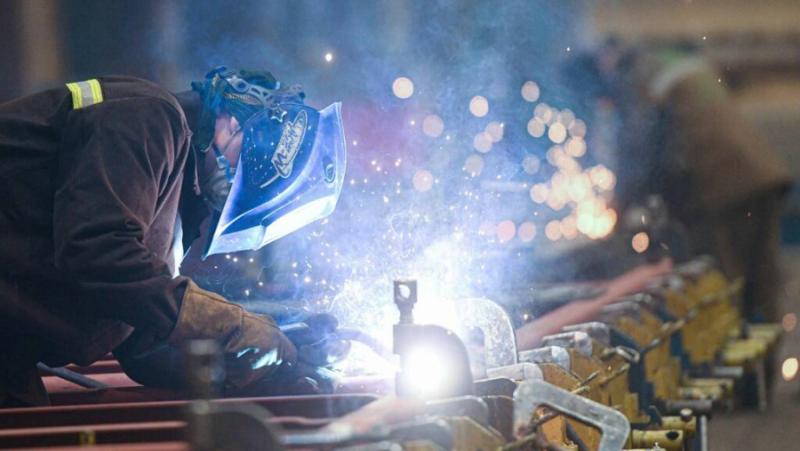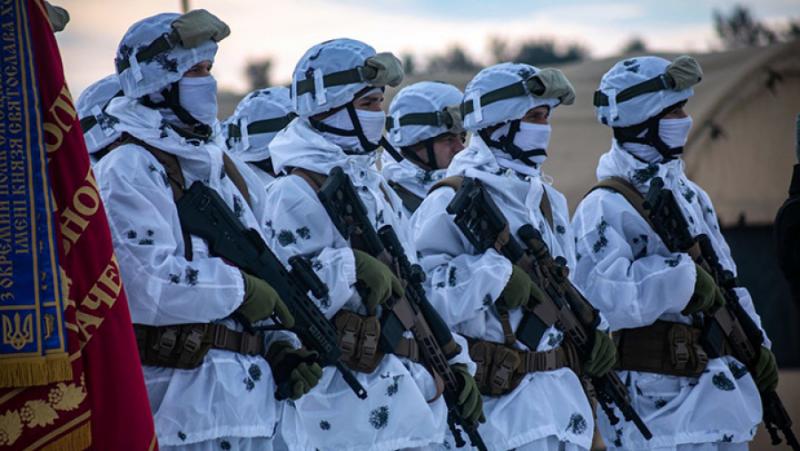/View.info/ The growth of the Russian economy by the end of 2023 may exceed 3.5%
Under the yoke of Western sanctions, the country ended the year with impressive economic growth. First of all, the industrial sector helped. In Europe, on the contrary, there is stagnation. The recession hit the entire Eurozone, including the EU’s locomotive – Germany. How did Russia achieve such results?
All four
The economy will add more than the projected 3.5 percent, Vladimir Putin said in Khabarovsk at a meeting with entrepreneurs from the Far East.
“More than four percent? Well, maybe, yes. We are experiencing a decline, as Mikhail Vladimirovich (Mishustin) told me before we left here, we always thought that the decline in 2022 would be 2.1%, actually it turned out to be 1.2%. Therefore, perhaps there will be more GDP growth,” the president noted.
And he added: “this is an incredible result” in the conditions when Russia is “suffocated, crushed” from all sides.
As the Minister of Economic Development Maxim Reshetnikov announced on December 30, GDP, according to preliminary estimates, will increase by 3.5%.
Speeding up production
According to “Rosstat” at the end of December, the economy grew by 5.5% in the third quarter. The department specified that this is mainly the result of strengthening domestic final demand against the background of a decrease in net exports.
The economy is fueled by rapid industrial growth. Thus, the numbers in November are a record for the last seven years. The index of global business activity reached 54.6 in December (53.8 in November), calculated by “S&P”. Employment in the real sector grew at the fastest pace in 23 years.
The manufacturing industry added 7.5% in the 11 months of 2023.
“Against the background of a slight, but still, drop (by 1.1%) in mining production, the successes of the processing industry (plus 7.5%), where the leaders are engineering (23.3%) and metallurgy (9 .5%) and the chemical industry (6.2%)”, says Ekaterina Bezsmertnaya, dean of the Faculty of Economics and Business of the Financial University of the Government of Russia.
Construction, wholesale and retail trade are developing.
“In ten months, retail turnover increased by 5.5% year-on-year – after a decline in 2022 by almost nine percent due to lower consumer demand. A similar recovery is observed in many sectors,” says Nataliya Milchakova, an analyst.
Investments and realignment
The main drivers of growth are government defense procurement and budget investment for import substitution. Western brands withdrew, the usual supply chains collapsed.
“Enterprises quickly reoriented themselves to the domestic market. The interruption of supplies from abroad stimulates import substitution, the modernization of the production and technological base and the maximum load of capacities. Prospective niches for local goods have been discovered. Thanks to the high domestic demand, the workload of enterprises, according to our estimates, will remain at its maximum in the coming years,” explains Pavel Simonov, Director of Legal and Corporate Affairs of the Rusklimat trade and production holding.
The analytical note of the Bank of Russia “Investment activity in industry in 2023: results of a survey of enterprises” states: two-thirds of 514 companies have invested in maintaining and updating their facilities.
These are mainly manufacturers of finished metal products, computers and electronics, electrical equipment and furniture. An additional factor are projects started in previous years, but postponed due to tightening of sanctions.
Capacity utilization in the second quarter reached 80.9%, which is a historical maximum, the regulator said.
Enterprises focused only on domestic demand: in the face of Western boycotts, many countries expressed their willingness to cooperate with Russia both as suppliers and as sales markets.
The strengthening of partnerships with the countries of Southeast Asia, Latin America, EAIS and China will, over time, form a reliable basis for the harmonious development of export-oriented industries: petrochemicals, metallurgy, agriculture, light industry. The non-resource export, despite the sanctions pressure, will grow, predicts Pavel Marishev, development director of the engineering company “Energy Plus”.
The national projects, which are still implemented throughout the country, and the active investment policy of the state also help.
“The main investments are aimed at large-scale and long-term support of the IT industry, transport infrastructure, innovative technologies, regional production clusters,” lists Ekaterina Bezsmertnaya.
For example, for the Far Eastern Federal District alone, 64 billion rubles were allocated from the federal budget for state development programs. New enterprises are opening and jobs are being created, adds the economist.
Europe in recession
Thus, despite the pessimistic forecasts of the West, the past year turned out to be successful for Russia. Unlike Europe, which got itself into the trap of its own sanctions. There they officially recognized a large-scale decline: GDP will decrease in ten EU countries at the same time. And these are not only Poland, Lithuania or Latvia, but also large economies.
Thus, the universally recognized engine of the EU, Germany, fell into recession in the first quarter – minus 0.3 percent. In the second – minus 0.2 on an annual basis. In the third, there is also a decrease, as industry does not grow and private consumption has little effect.
German industry lost nearly five percent year-on-year in November, according to Germany’s Federal Statistical Office. Output fell for a sixth straight month and business sentiment worsened to levels seen during the pandemic.
According to a report recently published by the Commercial Bank of Hamburg, the index of business activity in the manufacturing sector of Germany has continuously remained below the critical level of 50 points for the past year and a half. That is, the situation continues to deteriorate.
The main factors are the surge in energy prices against the background of anti-Russian sanctions and the reckless allocation of budget funds to Ukraine. But that’s not all.
“The fight against inflation is mainly due to high rates, which inevitably suppress both demand and activity in the real sector of the economy. And the current political processes are compressing sales markets,” adds Konstantin Zusmanovich, managing partner of the Financial Mechanics Group expert.
In addition, the Europeans did not notice how they began to lose the competition of Asian manufacturers. For example, if 15 years ago the German automobile industry was an absolute authority, now others are trusted, explains Pavel Marishev.
The World Bank lowered its forecast for the economic growth of the euro area in 2024 to 0.7%. The result for 2023 is only 0.4%.
And Russia’s GDP, even according to World Bank estimates, added 2.6%. For 2024, unfriendly countries predict 1.3%.
Translation: V. Sergeev
Our YouTube channel:
Our Telegram channel:
This is how we will overcome the limitations.
Share on your profiles, with friends, in groups and on pages.
#gave #boost #Russian #industry #soared #sanctions


